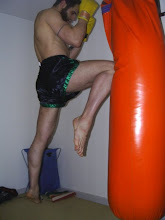
Karate-do in Kanji, means the way of the empty hand, most of us when we think of the Art of Karate, we should relate more to the movie Karate Kid (1984) or Mr. Miyagi's Wax On and Wax Off. Karate began as a common fighting style among the Ryukyuans from the Ryuku Island. There are a lot of influence of Chinese Martial Arts in Karate from the White Crane and 5 Ancestors school of martial arts. This happen in 1392 where both Japan and China had a Cultural Exchange program and both countries shares knowledge of Science and Arts.
Karate become more popular during 1429 with the Policy of Banning Weapons by King Sho Hashi. The main focus of Karate is an art that uses Punch, Kick, Knee and Elbow to hit the opponent, but other techniques like Knife-hands, Grappling and locks are also taught in some schools.
For any Karateka, the name Grandmaster Anko Itosu (1831 – 1915) should ring a bell, as he is considered as the Grandfather of Modern Karate, it is because of Grandmaster Anko Itosu the art of Karate was introduced to Public Schools in 1901. Grandmaster’s other attributes are including creating many other forms that is used is most of the Karate Schools. Also he had trained many other famous masters including Kenwa Mabuni and Motobu Choki.
Due to there is too many types of Kata, there are 2 different Federation that recognized their own style:
World Karate Federation (WKF) - recognized by International Olympic Committee
- Gōjū-ryū
- Shitō-ryū
- Shōtōkan-ryū
- Wadō-ryū
The World Union of Karate-do Organizations (WUKO)
- Gōjū-ryū
- Shitō-ryū
- Shōtōkan-ryū
- Wadō-ryū
Additionals for (WUKO):
- Shōrin-ryū
- Uechi-ryū
- Kyokushinkai
- Budōkan
Karate become more popular during 1429 with the Policy of Banning Weapons by King Sho Hashi. The main focus of Karate is an art that uses Punch, Kick, Knee and Elbow to hit the opponent, but other techniques like Knife-hands, Grappling and locks are also taught in some schools.
For any Karateka, the name Grandmaster Anko Itosu (1831 – 1915) should ring a bell, as he is considered as the Grandfather of Modern Karate, it is because of Grandmaster Anko Itosu the art of Karate was introduced to Public Schools in 1901. Grandmaster’s other attributes are including creating many other forms that is used is most of the Karate Schools. Also he had trained many other famous masters including Kenwa Mabuni and Motobu Choki.
Due to there is too many types of Kata, there are 2 different Federation that recognized their own style:
World Karate Federation (WKF) - recognized by International Olympic Committee
- Gōjū-ryū
- Shitō-ryū
- Shōtōkan-ryū
- Wadō-ryū
The World Union of Karate-do Organizations (WUKO)
- Gōjū-ryū
- Shitō-ryū
- Shōtōkan-ryū
- Wadō-ryū
Additionals for (WUKO):
- Shōrin-ryū
- Uechi-ryū
- Kyokushinkai
- Budōkan
Image Taken from shotokankarate.co.nz












This comment has been removed by a blog administrator.
ReplyDelete